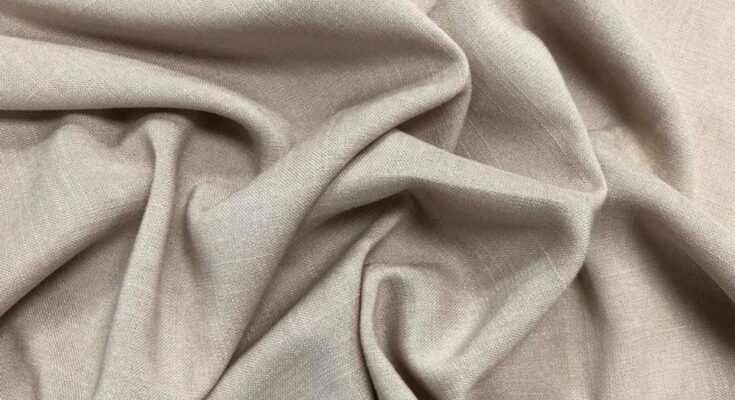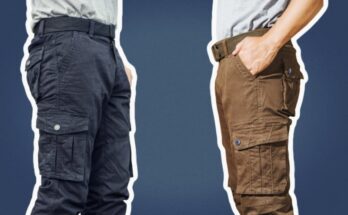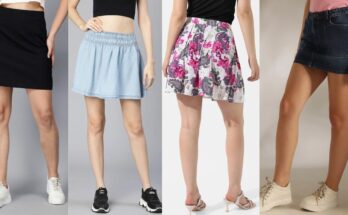Do you have a small business and are looking for the perfect fabric to make your collection stand out? The comfort, drape and versatility of viscose have made it a favorite fabric for small fashion labels, startups, and makers. Finding quality suppliers of “viscose fabric by the yard” can be confusing and time-consuming. This guide will help you cut through the clutter, identify good viscose and simplify the ordering process.
What is Viscose and Why Is It Popular?
Viscose is a rayon fabric made of cellulose regenerated from wood pulp. Viscose is valued by manufacturers for its silk-like, soft and breathable qualities. Viscose is a favorite of small clothing brands because:
- Feels comfortable and smooth against the skin
- It has a nice sheen.
- The dye is absorbed well by the fabric, so that colors are bright and even.
- It is relatively inexpensive, compared to other fabrics such as silk or linen.
Small brands struggle to find viscose fabric in high-quality yardage despite these advantages. Some challenges include buying small quantities, ensuring consistency in quality, managing shipping fees, and understanding fabric specifications. This blog post has one simple goal: to help you understand the sourcing process, so that you can buy with confidence.
Understanding Viscose Fabric
Property and Characteristics
The fabric is lightweight and airy and ideal for clothing for warmer weather and flowing garments. The key properties are:
- Softness: Similar to cotton or silk
- Breathability: Permits airflow to keep the wearer cool
- Absorbency: Holds color very well, allowing for rich, even colors
- Fluid Drape: Tends hang and move beautifully along with the body
There are many types of viscose available
There are several types of viscose fabric available by the yard. Knowing what you want and need can save time and money.
- Plain-Weave Viscose: Most common, lightweight, often used for dresses and blouses.
- Viscose Jersey: A knitted version with good stretch, often used for casual dresses and t-shirts.
- Crepe Viscose: Has a textured finish, excellent for summer clothing and blouses due to its drape.
- Blended viscose: Often mixed with linen, cotton, or spandex to add durability or stretch.
Advantages and Disadvantages
Pros
- Lightweight and comfortable
- Vibrant colors, prints and patterns
- Buy Tickets Online
- Drapes for all styles
Cons
- Easy wrinkles
- If not properly cared for, can shrink
- You may lose shape if you wash frequently
- It is delicate and needs to be handled with care
This helps small brands to set realistic expectations for their products and find fabrics that are suitable for specific designs.
How to identify quality viscose fabric
Viscose fabric by the yard does not all have the same quality. How to identify a good batch
How to Assess Quality
- Feel the Fabric: A viscose of high quality feels smooth, cool, and soft to the touch. It may not last well after washing if it feels stiff, coarse, or thin.
- Test the Drape: Unroll one yard to see how it falls. Viscose drapes well, rather than being stiff or limp.
- Color consistency: Examine fabric under natural light. Poor quality dyes or production shortcuts can be indicated by a patchy or streaky color.
- Check for Sheen: A quality viscose fabric should have an attractive, subtle sheen — not a plastic-like shine.
Factors that affect quality
- Fiber length: Longer fibers of cellulose make viscose fabric stronger, smoother and less pill-prone.
- Twist yarns: Properly twisting yarns will prevent loose threads and snags.
- Fabric construction: Tight, uniform weaves and knits provide durability and consistency.
Spotting Common Defects
- Slubs: Raised or thick threads. Some are intentional for texture. Random ones indicate uneven spinning.
- Faded or misprinted areas: This suggests poor dyeing and printing techniques.
- Pulls or Puckering: Look for these issues along the selvage.
Ask for fabric samples before placing a large order online. Or ask the supplier to send you close-up pictures of the current batch.
Find Reliable Suppliers of Viscose Fabric By the Yard
The right supplier will make or break the success of your next collection. Find reliable suppliers:
Reputation of Suppliers is Important
Not all sellers will deliver on their promises, especially with so many choices available online. Reputable fabric suppliers are transparent, provide clear descriptions and openly communicate. It reduces the chance of receiving fabric which doesn’t meet your needs.
Searching for Potential Suppliers
- Search for reviews: Find unfiltered feedback in forums, third-party websites, and social media.
- Request Samples: The majority of quality suppliers will send you samples to feel and test them before buying.
- Review certification: Certifications such as OEKO-TEX or FSC for wood pulp sourcing add credibility.
- Chat Customer Service: Inquire about sourcing, quality control processes and care instructions. A good sign is a quick, clear response.
Local vs. overseas suppliers
Local suppliers will reduce shipping costs and speed up deliveries. They can also make it easier to return items. You can feel and see the fabric by attending fabric shows or local textile markets. Double-check the shipping policies, taxes and delays for overseas options.
How to order Viscose Fabric By the Yard
It’s time to order. Avoid common pitfalls by following these tips:
Ordering Process
- Confirm the Minimum Order Quantity: Although smaller brands may require less fabric, many mills have MOQs. Search for suppliers of “viscose fabric by the yard”, with low or no minimum order quantities.
- Find out the lead time: Inquire about how quickly and how long it takes to receive your fabric.
- Request Sample Lots: When your order is large, request a sample lot to test quality and consistency.
- Confirm Color and Print: Because viscose absorbs the dye so well, there may be color variations from batch to batch. When ordering large quantities of printed or dyed fabrics, get a cutting for approbation (CFA).
Negotiating prices
- Directly communicate your requirements and future orders.
- Bundling colors and styles can help you reach the MOQ to get a lower price.
- Compare offers from different suppliers to find the best price.
Watch Other Things
- Shipping costs: Receive a complete price, including freight, taxes, and customs.
- Return policy: Know what your options are if your goods arrive damaged, or don’t meet your expectations.
Care for Viscose Fabric
When you have purchased quality viscose fabrics by the yard, it is important to take care of them.
How to Wash and Dry Your Clothes
- Use gentle cycles: Wash by hand or with a mild detergent and cold water.
- Avoid tumble dryers: Lay out flat or hang to dry, but avoid high heat because viscose may shrink or wrinkle in the dryer.
- Iron at Low Heat: Use a pressing towel and set the temperature to low.
Storing Viscose fabric
- Store away from moisture or direct sunlight.
- Hanging finished viscose clothing for long periods of time can stretch the fabric.
- Fold or roll the fabric carefully if you are cutting it by the yard to avoid creasing.
Follow the Care Labels
Always attach care labels to garments according to the guidelines of fabric suppliers. It will prevent shrinkage and fading. This keeps your customers satisfied.
Take Action for Small Brands
It’s not difficult to find quality viscose fabric by the yard. Keep in mind the following:
- You should learn as much as possible about the properties and types of viscose.
- Before placing large orders, test samples and inspect the quality.
- Start small and build relationships with suppliers.
- Take into consideration the quantity, color, and lead time.
- To get the best out of your viscose investment, you should take care to handle and maintain it.
To get a deeper dive, you can consult with trade organizations, attend textile shows, or reach out to other small brands on online maker communities that have shared their supplier lists and tips.
Explore our diverse range of custom printed, ready mill-dyed, and yarn-dyed fabrics to find the perfect match for your next collection. For personalized assistance or inquiries, reach out to us at hello@fabriclore.com. Experience seamless, authentic, and affordable fabric sourcing with Fabriclore.




